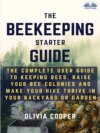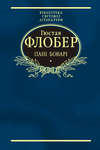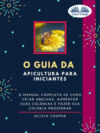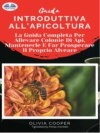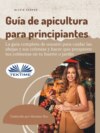Kitabı oku: «Beekeeping Starter Guide», sayfa 2
CARPENTER BEES AND DIGGER BEES (Apidae)
Carpenter bees are solitary bees. They set up nests and feed only themselves and their young ones. They possess the ability to bore through wood and that's how they got their name. They have smooth stingers so they can sting several times. They are blue-black in color. These bees collect nectar and pollen to give to their young ones as food. Carpenter bees drill through delicate woods to lay their eggs and safeguard their larvae as they evolve. Female bees can chew a tunnel into bits of wood to set up a nested path. The pieces of wood she chews and keep outside the nest are called "frass". The opening of the passage is normally around one or two inches deep, and they have a length of up to 10 feet long. These tunnels normally have various rooms where the bees keep their eggs and store their food.
Carpenter bees are not life-threatening, but they can destroy the wood where they set up their nests. Carpenter bees are useful because they pollinate plants that are ignored by honeybees.
DIGGER BEES
Digger bees are solitary bees and great pollinators as well. Digger bees normally set up their nests in the soil. They possess hairy bodies and can be as long as 3cm. Some species in the US, for instance, can possess a brown ginger-like, body with hairs, or possess black glossy trunks.
LEAF CUTTER BEES AND MASON BEES
These bees are also solitary. Normally with solitary bees, a solitary female mate, then builds a nest independently, and takes care of the larvae. Nevertheless, some solitary bees, do exist in a simple societal structure or social group where a few solitary bees may build their nests near one another, and in some instances, they even ration guarding of the nests and scouring for food duties.
Mason bees like to set up their nests in crevices, and Leafcutter bees prefer hollow stems and holes in wood. Leafcutter bees cut away portions of leaves for building their egg cells. Leafcutter bees do not damage the plant from which it takes the part from the leaf. Solitary bees rearing for commercial bee pollination are rising.
MINING BEES (ANDRENIDAE)
Mining bees are related to a big family of bees made entirely of numerous kinds of bees around the world. Mining bees are also solitary, the females make nests closely with each other. Mining bees dig tunnels and cells under the soil. They are visible in yards, gardens, small ridges and heaps of earth in fields, or even in borders. Generally, they appear to like sandy soil. They don't cause a lot of damage and can be accepted in the garden. They are also an important source of pollinators of plants and flowers.
PLASTERER BEES
Plasterer bees can also be called cellophane bees, and sometimes even polyester bees. These bees make amazing glues.
WOOL CARDER BEES
This lovely wool carder bee collects plant hairs, wraps them into small balls, and utilizes them to make its nest.
FLOWER BEES
Flower bees are great to plant pollinators.
NOMAD BEES
The Nomad bees can easily be misinterpreted as tiny wasps. Nomad bees are cleptoparasites.
STINGLESS BEES
The Stingless bees are wonderful bees that pollinate flowers. Surprisingly, some stingless bee species feed on dead meat!
LONG-HORNED BEES
These are bees with long antennae visibly obvious in the male bees.
FURROW BEES
Furrow bees scour for food on wildflowers such as knapweeds and thistles.
TYPES OF BEES IN A HIVE
There are several types of bees in a beehive: Queen, Worker, and Drone. Each of these kinds of bees has its vital functions and does certain duties in a colony.
THE QUEEN

Queen bees are differentiated from the other bees in the hive by their long abdomens and small wings. The queen's abdomen is normally sleek-smooth and long, extending beyond her folded wings. Sometime after their birth, they go out to mate with 15 or more drones over a three-day term before they retreat to the colony to lay eggs.
The queen will remain in the hive and not leave again unless the colony requires a new home. The queen's duty in the hive is to reproduce. She is usually the only reproductive female in the colony as there is one queen bee per hive. She lays eggs in the early spring when the first new pollen is brought by the workers to the colony. She continues to produce eggs as long as the pollen is available.
The Queen can lay as much as 2000 eggs each day. A queen bee's life span barely exceeds 2-3 years, but she can survive for up to 7 years. Younger queens generate multiple eggs, and older ones may produce many drones. Most beekeepers replace their queens every year or two. Aging and older queens are continuously replaced by the workers without any assistance.
When the colony wants another queen bee, they just select a healthy larva that has already been hatched from an egg of the existing queen and give it royal jelly (a special and super nutritious food) to feed on. The royal jelly enables the larva to grow into a Queen. A professional beekeeper can rear good queens, but a beginner will just buy good queens from a reliable producer. Queen bees also produce a pheromone referred to as queen substance.
This chemical combination is individually transferred from one bee to another bee throughout the full hive as they share food. If a queen bee leaves a colony, the worker bees usually discover her absence within some hours because the pheromone level will drop. This state of having no Queen will promptly activate the desire to get a new "emergency" queen from the youngest usable larvae (1-3 days old). This emergency situation can also limit the development of the ovaries of the workers. After a period of having no queen, some of the workers may become laying workers. Workers also assess their queen based on the amount of the pheromones she produces. If workers start getting limited or inadequate doses each day, they may see her as a low-quality queen, and begin to prepare to replace her. Beekeepers usually mark the queen's thorax with color to be able to locate her easily and to know if she has been replaced.
WORKER BEES

Workers are the smallest bees in the bee colony, and they are the most numerous. The workers are female, and typically unable to reproduce. They are not able to mate, but in a circumstance where there is no queen in the colony, workers may start laying unfertilized eggs, which later become drones. Worker bees comprise about 99% of the entire bee population of each colony and they are the most familiar members.
The worker bee's stinger is barbed, so when she is compelled to protect herself or the hive, her stinger tears off if she flies away because her stinger will be stuck on the sufferer's skin. She dies when she inevitably rips herself away from the stuck stinger. The stinger left behind will continue to put venom from the venom sack into her victim.
Workers have 3 simple eyes that consist of the vertex and fully developed compound eyes on each side of their heads. Their tongue is nicely developed and extended for taking nectar from flowers. Worker bees do nearly everything for the hive. From the birth of the worker bee to her death, which is roughly 45 days later, the worker is assigned several duties to perform during the various phases of her life. Worker bees perform the function of:
Cleaning the hive
Producing the royal jelly used to feed their queen and their larva
Building honeycombs by secreting the wax used in the hive and molding it into honeycombs.
Collecting the food by foraging for nectar and pollen, bringing it to the hive, and converting the nectar to honey.
Tending to the demands of the larvae and queens.
Capping the cells of mature larvae for pupation and removing debris and lifeless bees from the hive.
Guarding and defending the hive against enemies and conserve optimal conditions If the hive by warming, cooling, and airing the hive.
Workers raised during spring and early summer season live for about five to six weeks. In the first two weeks of their lives, they spend it as house bees performing tasks in the hive. For the remaining part of their life span, they spend it as field bees, foraging for food outside the hive.
DRONES

Drones are the male honey bees whose purpose is in mating with and fertilizing a young queen bee. If they get the chance to mate, they die shortly afterward. If they don't mate, they can survive for up to 90 days. Drones are easily recognized in the hive by their big round bodies and large eyes. They are bigger in size and stouter than workers. They have big distinct eyes that unite at the top of their heads and possess antennae a little bit longer than that of the queen or workers. They have a reduced mouth part. Drones come from unfertilized eggs, and the cells of drones are larger than that of workers.
Drones feed themselves directly from honey in the hive or get food from worker bees. They are reared mainly in the spring and summer, starting about four weeks before new queens are generated, therefore making sure that sufficient drones will be prepared to mate with new queens. Their day is normally split between eating times and resting times, and guarding mating sites called drone congregation areas. As the number of accessible food decreases, drone production will stop in the late summer. Before winter, the drones are normally sent out of the hive by workers, who guard the hives, so they won't come back. A colony without a queen may create laying workers, who can bring forth just drones. When this happens, the colony will be in bad condition. The production of many drones, hence, will be their last step to pass on the genetic line of the colony by mating with a virgin queen from another colony.
THE HIVE
Honeybees do not create an exterior layout that surrounds their hive. They love staying in hollow areas like a hollow tree, a deserted fallen wood, or in a regular man-made beehive.

Nevertheless, they construct the interior part of their hive. Honeybees produce beeswax, which the bees utilize to construct excellent small hexagons inside their hive. Smaller openings are called cells, then the bees keep everything, including eggs, pollen, and honey in them. They make a substance referred to as propolis to close and cover their hive and also, to defend them against diseases. Propolis includes a mixture of beeswax, plant resins, and honey. It is also anti-fungal, anti-bacterial, and anti-viral.
Beeswax is sticky and the bees use it to cover gaps or openings they may experience during housekeeping, it further sterilizes and safeguards their home. Due to the large population in the colony, they require a form of communication to understand each other. Bees communicate in two ways: by scent and by dancing. Whenever a bee is warning the other bees about an enemy, when the bees inside the hive are especially delighted, honeybees can expel a particular hormonal aroma known as the pheromones. The honeybees normally recognize these scents and understand their message. A happy bee pheromone has a lemon fragrance, and a warning smell has the scent of a banana. A bee that is foraging wants to give notice to her sisters as to where to get nectar, then she dances. She performs unique turns and wiggles drawing a map to indicate where she got the food.
Ücretsiz ön izlemeyi tamamladınız.
